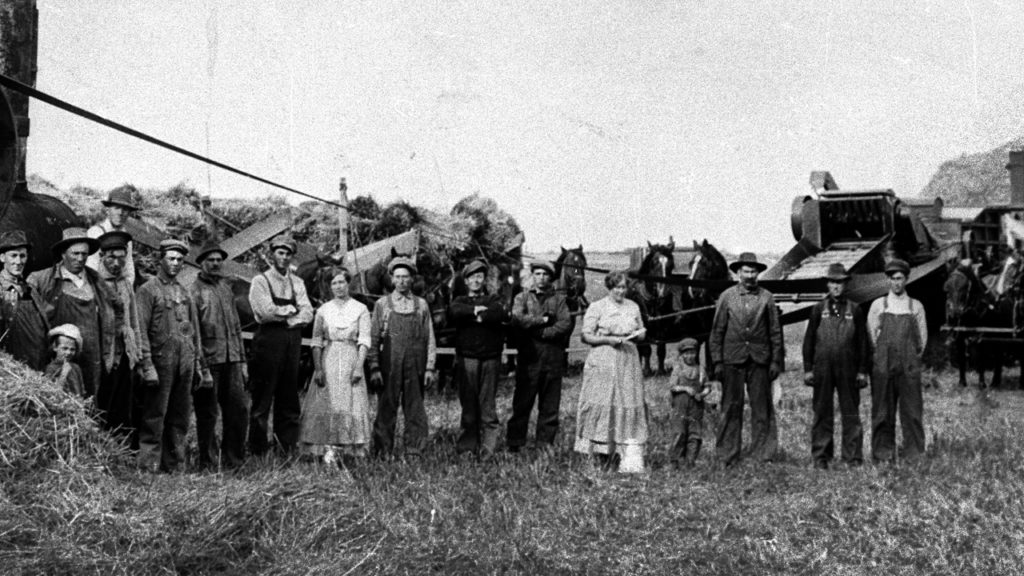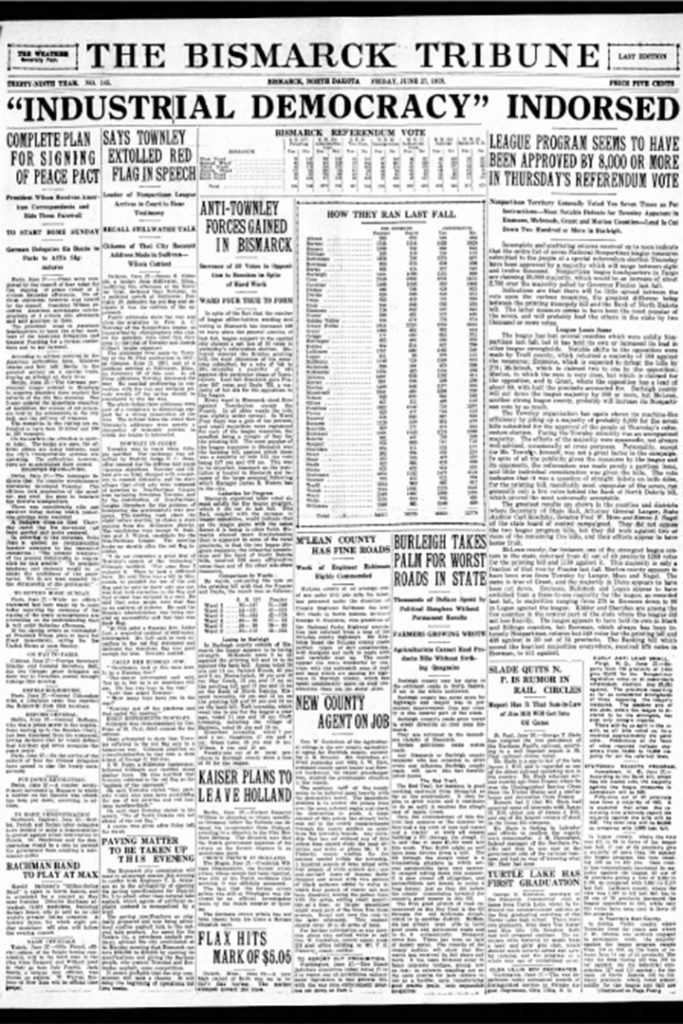
The idea that simple farmers could chart their own destiny and win honest election to the highest offices in North Dakota appalled establishment institutions not only in North Dakota but across the United States. It was unthinkable that farmers had the intelligence, the political instincts and talent, and the organizational skills to change the trajectory of life on the northern Great Plains. Instead of debating the merits of the League’s Industrial Program, most institutions, including newspapers, fought the battle with sarcasm, condescension and ad hominem attacks. The Dayton Press, located in Washington state, wrote,
“No wonder that the Nonpartisan bunk became so popular in North Dakota. The census taker found only five bathtubs in four counties. Uncleanliness and ignorance are ever companions, instance the Bolsheviki in Russia and the Bolsheviki hoboes of the I.W.W. and other unclean classes in the United States.”
The most forceful of the attacks on the Nonpartisan League were that it was the vanguard of a socialist movement designed to imitate in America the goals and methods of the Bolshevik Revolution in Russia, and that its leaders showed disloyalty at a time of international emergency. The NPL endorsed the American war effort in World War I, but reserved the right to question the aims and actions of the United States. Although the League at different moments imagined a fairly wide number of state-owned economic enterprises, some of them seemingly frivolous, it never intended or suggested a Socialist Revolution. The State Bank of North Dakota is one ”socialist” legacy of the NPL movement.
Referral
In the wake of the revolutionary 1919 legislative session, the Independent Voters Association (IVA) referred several bills, including the creation of the Industrial Commission, the establishment of the Bank of North Dakota, the law providing for the selection of official newspapers in every county, the bill funding a Commissioner of Immigration, and other legislation.
Governor Lynn J. Frazier pre-empted the IVA plan by calling for a statewide referendum on the seven major pieces of League legislation for June 26, 1919.
After a bitter campaign, in which the IVA lied repeatedly to the people of North Dakota, the seven measures were all affirmed by the people.
The Bank of North Dakota was re-affirmed by a 23,256-vote majority.


